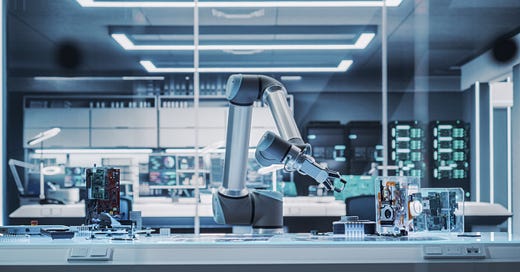Weekly Tech+Bio Highlights #32: Chemical Lab Run by Multi-Agent AI
AI in Materials Science, Humanoid Lab Robots, Summarizing Findings From 22M Scientific Papers, and more...
Hi! This is
’s weekly newsletter, Where Tech Meets Bio, where we explore technologies, breakthroughs, and cutting-edge companies.If this newsletter is in your inbox, it’s because you subscribed or someone thought you might enjoy it. In either case, you can subscribe directly by clicking this button:
Let’s get to this week’s topics!




